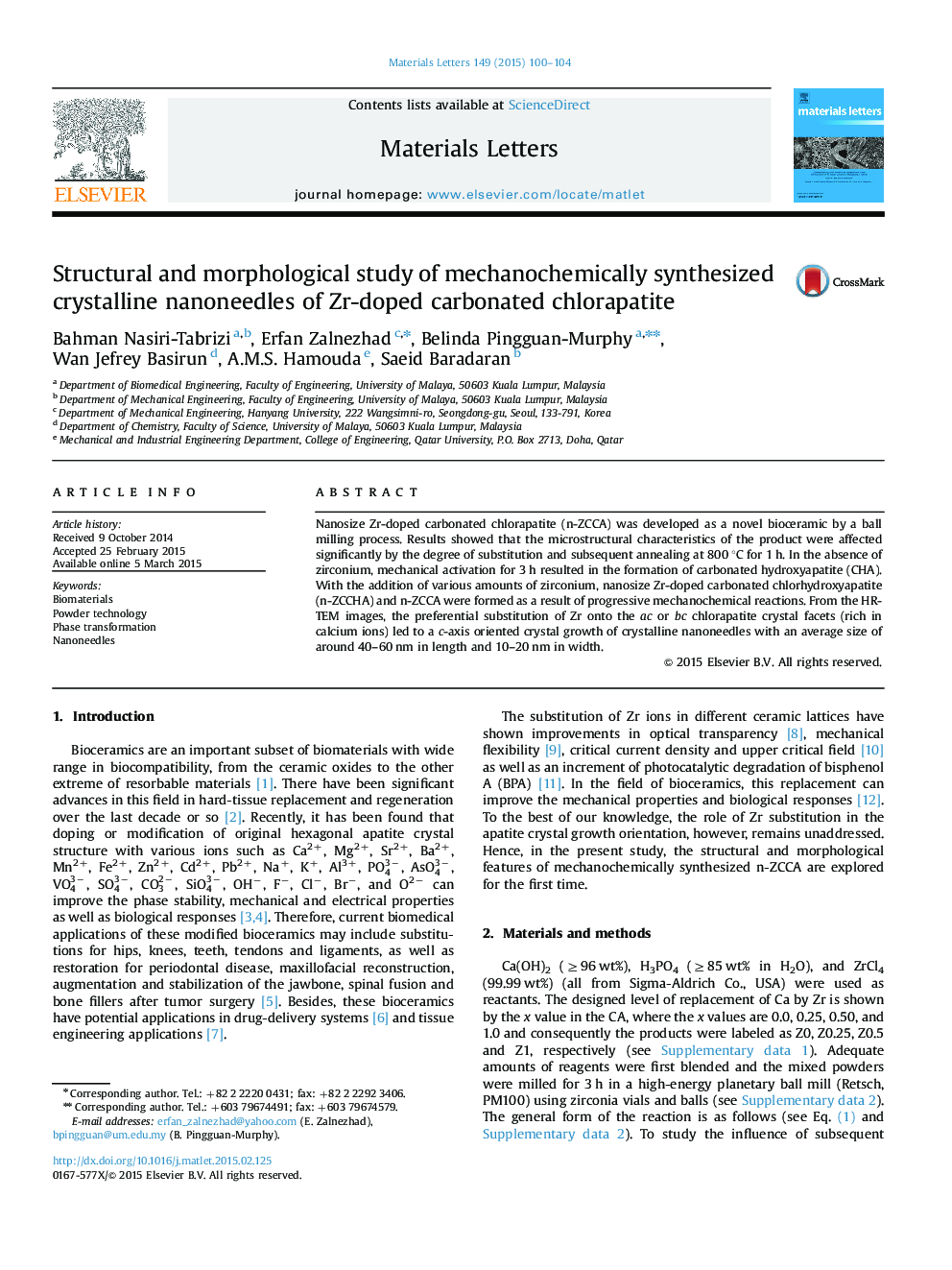| Article ID | Journal | Published Year | Pages | File Type |
|---|---|---|---|---|
| 1642882 | Materials Letters | 2015 | 5 Pages |
•Nanosize Zr-doped carbonated chlorapatite was developed for the first time.•The influence of mechanical activation and subsequent annealing was discussed.•The c-axis oriented crystal growth of nanoparticles was observed.•The average size of nanoparticles was found between 40–60 nm in length and 10–20 nm in width.
Nanosize Zr-doped carbonated chlorapatite (n-ZCCA) was developed as a novel bioceramic by a ball milling process. Results showed that the microstructural characteristics of the product were affected significantly by the degree of substitution and subsequent annealing at 800 °C for 1 h. In the absence of zirconium, mechanical activation for 3 h resulted in the formation of carbonated hydroxyapatite (CHA). With the addition of various amounts of zirconium, nanosize Zr-doped carbonated chlorhydroxyapatite (n-ZCCHA) and n-ZCCA were formed as a result of progressive mechanochemical reactions. From the HR-TEM images, the preferential substitution of Zr onto the ac or bc chlorapatite crystal facets (rich in calcium ions) led to a c-axis oriented crystal growth of crystalline nanoneedles with an average size of around 40–60 nm in length and 10–20 nm in width.
